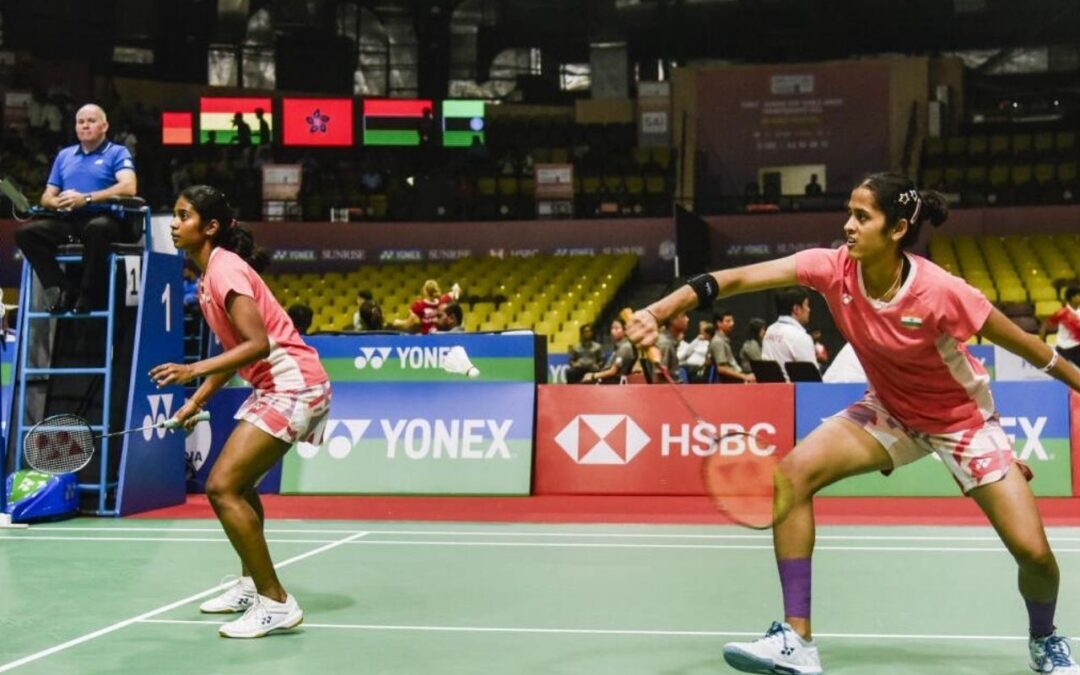India created history on October 9, 2025, by confirming its first-ever medal at the BWF World Junior Mixed Team Championships in Guwahati, Assam. The Indian junior team defeated Korea 44-45, 45-30, 45-33 in a thrilling quarterfinal contest to book a place in the semifinals.
The victory ensured India at least a bronze medal, marking a proud and historic moment for the country’s badminton community. This is the first time India has reached the semifinals in the event’s history.
A Breakthrough on Home Soil
The 2025 edition of the BWF World Junior Championships, also known as the Suhandinata Cup, is being held from October 6 to 11 at the National Centre of Excellence in Guwahati. This is only the second time India has hosted the tournament, the first being in Pune in 2008.
Hosting the event again after 17 years, India has now turned that opportunity into a moment of glory by securing a podium finish for the first time in the team’s history.
Before this year, India had never won a medal in the mixed-team category at the World Junior Championships. The best performances previously came in individual events, where players like Lakshya Sen, Saina Nehwal, and Satwiksairaj Rankireddy made their mark at the junior level.
This team medal shows that Indian badminton has grown stronger not only in singles but also in doubles and mixed formats, a sign of balance and progress.
How the Victory Unfolded
The quarterfinal against Korea began on a tense note. India narrowly lost the first set 44-45, but the young shuttlers showed remarkable resilience to stage a comeback. With steady nerves and smart strategies, they bounced back to win the next two sets 45-30 and 45-33.
Rising star Unnati Hooda played a key role with her confident shot-making and composure under pressure. India’s doubles pairs also stepped up, executing well-timed tactical changes that turned the match in India’s favor. The players displayed strong teamwork and communication, which helped them dominate the final two sets and seal the tie.
The format of the championship means that both losing semifinalists are awarded bronze medals, so India’s entry into the semifinals guaranteed its place on the podium, a first in 25 years of competition.
Also read: WPL 2026 Mega Auction: Check BCCI’s New Guidelines for Player Retention, RTM and Auction
A Milestone for Junior Badminton
This achievement is a major boost for Indian badminton’s next generation. It reflects years of investment in youth development programs and the Badminton Association of India’s focus on building a strong junior structure. The result also shows how far Indian badminton has come, from relying on individual brilliance to thriving as a well-rounded, team-oriented unit.
Young talents like Unnati Hooda, Ayush Shetty, Samarveer, and Radhika Sharma have shown that India’s badminton future is in safe hands. Their success in Guwahati will motivate more young players to dream big and work hard to represent India on the world stage.
What Lies Ahead
India will face Indonesia, the reigning Asian U-19 mixed team champions, in the semifinals. While a place in the final would be another incredible achievement, the current success itself is historic.
Regardless of the semifinal result, India’s 2025 campaign has already written a new chapter in the sport’s history, a symbol of teamwork, belief, and rising talent. The first-ever team medal at the World Junior Championships is not just a victory for the players, but a moment of pride for the entire nation.
Written by Kinjal Walantra
Disclaimer

The views and investment tips expressed by investment experts/broking houses/rating agencies on tradebrains.in are their own, and not that of the website or its management. Investing in equities poses a risk of financial losses. Investors must therefore exercise due caution while investing or trading in stocks. Trade Brains Technologies Private Limited or the author are not liable for any losses caused as a result of the decision based on this article. Please consult your investment advisor before investing.


